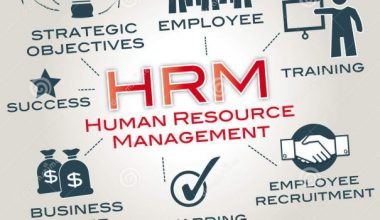The talent acquisition landscape continues evolving as emerging technologies and shifting workplace norms transform traditional staffing approaches. Understanding the latest industry trends empowers recruitment leaders to meet escalating candidate expectations around streamlined, positive experiences while still providing clients with optimized, data-backed workforce solutions that navigate business complexities in real time.
Modern staffing proactively drives enterprise growth rather than reactively filling openings by embracing innovations around flexible sourcing models, candidate-centric practices, data utilization, gig arrangements, and enhanced employee development. Let’s examine some staffing industry trends reshaping best practices:
The Remote Revolution: Embracing Flexible Work Models
Without question, expanding remote and hybrid work arrangements represents the most disruptive talent acquisition shift in decades. Nearly 50% of the global workforce now fills partially or fully remote roles compared to just 5% before COVID-19. Furthermore, over 75% of candidates prefer work-from-home flexibility for improved work-life balance. Staffing firms must champion virtual hiring capabilities, matching remote talent with suitable clients globally.
Here are some techniques for integration:
- Distributed Recruiting Teams: Maintain hub-based onboarders for in-person immersion complemented by remote sources tapping wider talent pools beyond local borders through digital networking and AI-enabled platforms.
- Virtual Tools and Technologies: Invest in streamlining screening and onboarding through sophisticated video interview software, project management systems that facilitate collaborative hiring and onboarding workflows, and cloud-based databases that centralize engagement management.
- Target Passive Candidates: Reach talent unlisted on traditional job boards proactively through geo-targeted social media engagement, programmatic advertising plus, and referral initiatives incentivizing recommendations from current virtual contractors
- Revamped Client Partnerships: Educate clients on best practices adapting company cultures to flexible arrangements through manager training on engagement, recognition, and team bonding for remote workforces
AI and Automation: Transforming Recruitment
Integrating artificial intelligence and sophisticated algorithms also allows for boosting recruiter productivity exponentially while enhancing the experiences modern job seekers expect. AI is transforming several key aspects of staffing:
- Resume Screening: Intelligent parsing tools automatically extract relevant competencies, skills, and experiences from resumes and applications to accelerate sorting and searchability. Natural language processing identifies optimum fits.
- Candidate Sourcing: Automated sourcing aggregators scrape web profiles, publications listings, and referral networks to identify qualified, passive candidates aligned with open searches instead of relying purely on inbound applicants.
- Skills Assessment: AI-enabled online competency tests evaluate technical, cognitive, and soft skills through advanced scenario questions and logic challenges predicting candidate proficiencies critical for specific roles.
- Chatbots: Conversational bots field common questions and screening responses through interactive voice and text interfaces 24/7, allowing recruiters enhanced capacity for higher-level assessment rather than repetitive administrative tasks.
The key is balancing productivity gains from automation with continued human touches, nurturing meaningful candidate connections throughout assessments, and moving them into long-term retention where value truly materializes for clients.
The Candidate Experience: Building Lasting Relationships
With today’s abundance of opportunities and shifting generational attitudes, talent retention over the long term rests upon positive candidate experiences cultivating lasting engagement across the employee lifecycle from first impressions and beyond. Here are some focuses:
- Clear and Transparent Communication: Continually inform applicants regarding timelines, next steps, and status updates to set clear expectations for selection and alignment processes. Uncertainty breeds frustration.
- Streamlined Application Process: Minimize tedious resume parsing and repetitive form-filling through AI-assisted data integration. Mobile-friendly communication with candidates is equally crucial.
- Fast Response Times: Respond to candidate inquiries within 24 hours, confirming the arrival of submitted information and providing projections for follow-up conversations around competency evaluations or interviews.
- Positive Employer Branding: Getting talent excited around potential employers as clients start with the staffing partner’s conveyed culture. Highlight development opportunities and workplace perks manifesting post-placement to inspire candidate advocacy.
Joint marketing initiatives co-creating content with partner employers also nurture positive perceptions. For smaller clients, aggregated promotion under a unified staffing firm’s umbrella brand lends stability.
Data-Driven Talent Acquisition: Making Informed Decisions
Leveraging analytics enables educated workforce planning beyond guesswork for clients. Benefits include:
- Identifying Skill Gaps: Aggregated performance data, tenure metrics, and exit analysis determine recurring competency gaps that need fulfillment each quarter. This proactively guides recruiting priority realignment and allocation well before replacement urgencies arise.
- Measuring Candidate Quality: Consolidated ratings across client satisfaction surveys, retention figures, and hiring manager feedback enable benchmarking recruiter success in quantifying value beyond purely fill rates.
- Improving ROI: Calculated hours spent per placement, cost per screening tool utilized, and dedicated talent advisor salaries allow shaping teams to optimize return on investment through workflow data analysis.
Capitalizing on metrics minimizes risk around experimental initiatives by determining actual impact mathematically. Numbers guide business strategy.
The Gig Economy on the Rise
Seeking balance and variety, over 35% of working professionals now participate in America’s booming gig economy, spanning Uber drivers to specialized consultants around architecture, law, and IT. This enormous pool of experienced specialists presents staffing huge options:
- Increased Demand For Temporary Workers: Voluntary turnover, leaves, and specialized project needs will continue driving double-digit growth in temp staffing. LinkedIn predicts a 20% increase in contract roles over the next five years. Staffing firms bridge critical gaps with ideal matches.
- Customized Arrangements: Bespoke offerings like freelance pipelining, retained search, and embedded contractor models allow clients to choose tailored combinations of fixed and scalable talent calibrated precisely to evolving priorities amid ever-changing markets.
- Expanded Service Capabilities: Virtual admin support, lifestyle management, crisis PR responses, short-notice event coordination, and other vital assistance are highly demanded through on-call platforms. This diversifies staffing revenue streams beyond standard hiring fees.
- Holistic Business Partnerships: Joint ventures launching dedicated talent management programs custom-built from the ground up for specific clients provide full-spectrum infrastructure, improving their operations, productivity, and workplace experiences overall.
Continuous Learning and Development
With remote technology accelerating workplace disruption cycles exponentially across sectors, reskilling and upskilling the workforce is imperative for organizational agility, stimulating essential productivity despite talent gaps. Let’s examine dimensions for staffing firms to spearhead ongoing learning:
- Industry Trend Tracking: Curating training around high-demand skills like data science, coding, and digital fluency ensures qualified talent keeps apace as client priorities shift, preventing operational bottlenecks when bleeding-edge needs emerge.
- Develop Specialized Skills Training: Partner with niche experts, software firms, and equipment manufacturers to provide immersive education and amplify hiring pools in critically understaffed fields like cybersecurity, AI implementation, robotic assembly line programming, and more.
- Invest In Employee Training: Elevate recruiters’ capabilities alongside placed talent by subsidizing continuing education like data-driven hiring certifications, DEI seminars, and virtual onboarding courses. Enhance internal practices. Lead by example, expanding possibilities.
Ongoing professional development at scale nurtures indispensable talent pipelines on which thriving enterprises depend when catalyzing rapid transformations and innovations vital for gaining market advantages against disruptions.
Conclusion
From surging remote and contingent workforces to data-enriched decision-making capabilities and holistic development priorities, staffing enters an era filled with immense potential to elevate enterprise success if trends get leveraged correctly. However, executing effective adaptation means overcoming inertia around outdated assumptions. Staffing partners taking decisive action on empowering recruiter capabilities, transforming candidate care, and implementing scalable solutions for ahead-of-curve needs will solidify indispensable strategic positioning as more organizations turn towards external talent guidance charting workforce futures faster than internal functions can alone.






